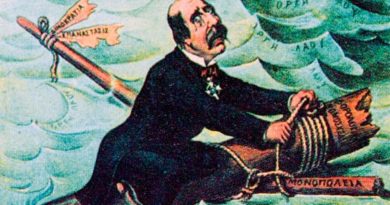Otto of Greece-3 September 1843 Revolution
Although King Otto tried to function as an absolute monarch, as Thomas Gallant writes, he “was neither ruthless enough to be feared, nor compassionate enough to be loved, nor competent enough to be respected.”
By 1843, public dissatisfaction with him had reached crisis proportions and there were demands for a Constitution. Initially Otto refused to grant a Constitution, but as soon as Bavarian troops were withdrawn from the kingdom, a popular revolt was launched.
On 3 September 1843, the infantry led by Colonel Dimitris Kallergis and the respected Revolutionary captain and former President of the Athens City Council General Yiannis Makriyiannis assembled in Palace Square in front of the Palace in Athens. Eventually joined by much of the population of the small capital, the rebellion refused to disperse until the King agreed to grant a Constitution, which would require that there be Greeks in the Council, that he convene a permanent National Assembly and that Otto personally thank the leaders of the uprising.
Left with little recourse now that his German troops were gone, King Otto gave in to the pressure and agreed to the demands of the crowd over the objections of his opinionated Queen. This square was renamed Constitution Square (Πλατεία Συντάγματος) to commemorate (through to the present) the events of September 1843—and to feature many later tumultuous events of Greek history.[9] Now for the first time, the king had Greeks in his Council and the French Party, the English Party and the Russian Party (according to which of the Great Powers’ culture they most esteemed) vied for rank and power.
The King’s prestige, which was based in large part on his support by the combined Great Powers, but mostly the support of the British, suffered in the Pacifico incident of 1850, when British Foreign Secretary Palmerston sent the British fleet to blockade the port of Piraeus with warships, to exact reparation for injustice done to a British subject.
more info




